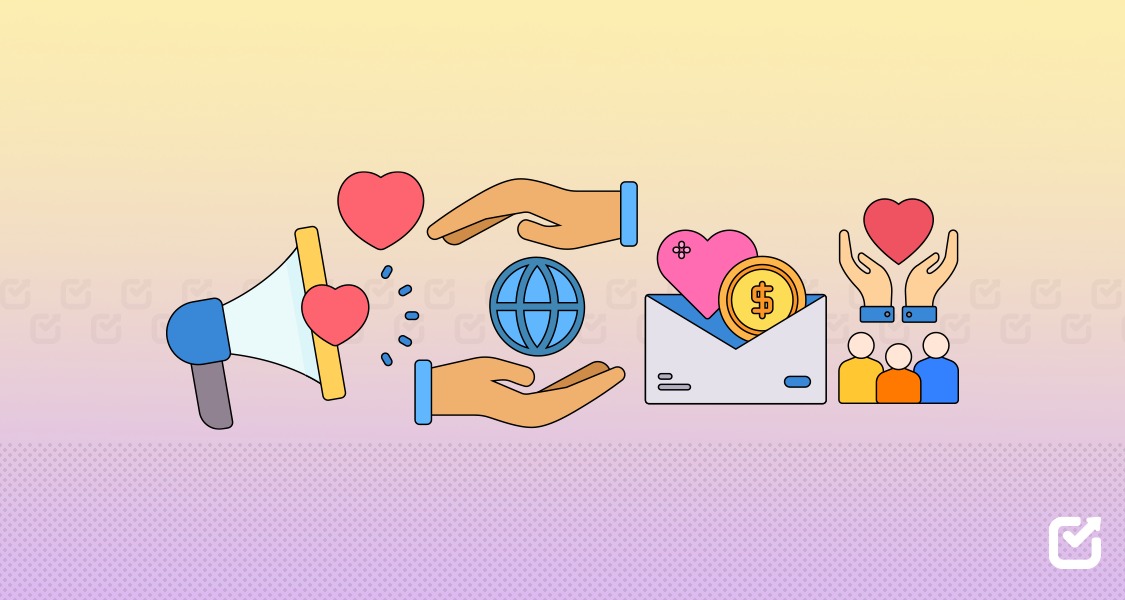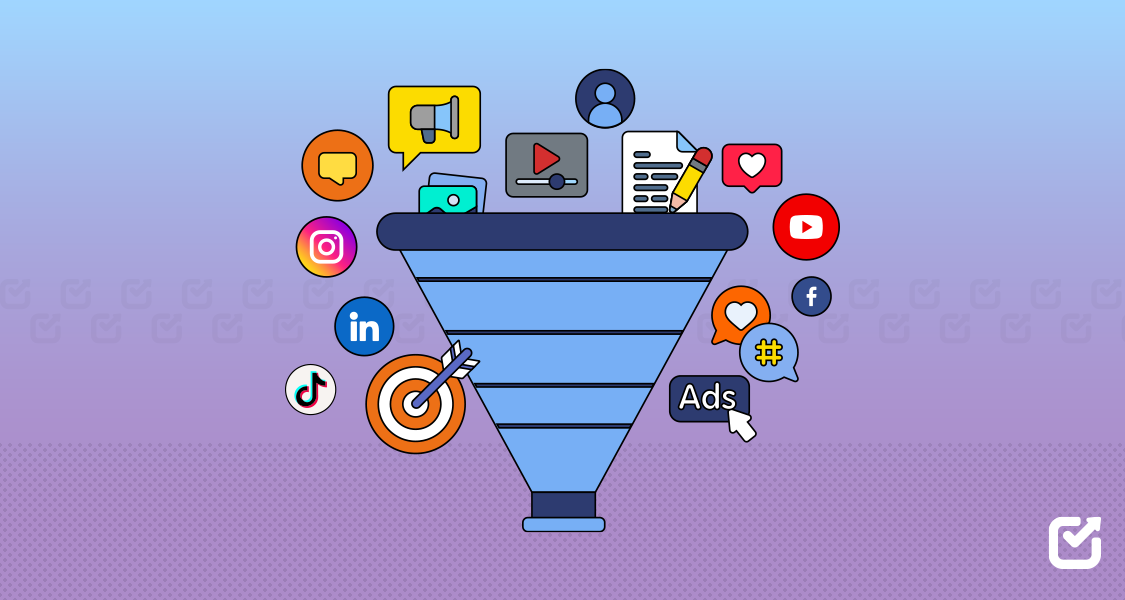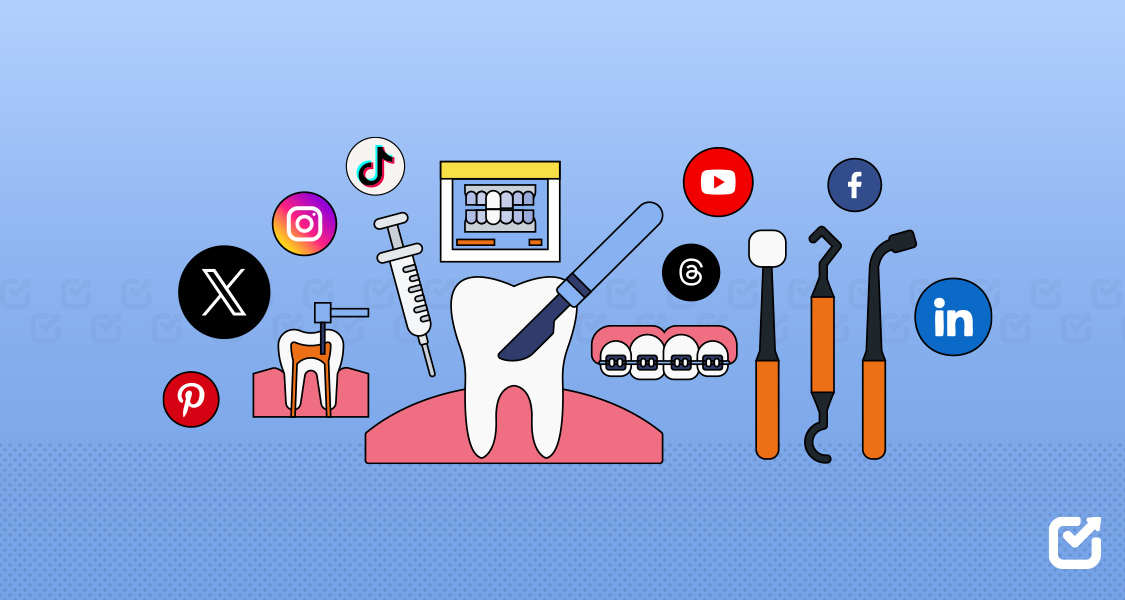Nonprofits do incredible work, but getting the word out and securing donations can feel like an uphill battle—especially in a fast-changing world.
There are more ways than ever to connect with supporters and grow your impact.
In fact, 41% of Gen Z say that social media has motivated them to donate to a cause. That means people are willing to give, but they need to hear your message in the right way with the right marketing strategies for nonprofits.
This guide covers 20 of the best marketing strategies to help your nonprofit stand out, engage donors, and drive more support with the help of the right social media tool in 2025.
Whether you’re looking to refine your social media approach, optimize email campaigns, or explore new fundraising techniques, you’ll find actionable tips to make a difference.
Let’s dive in!
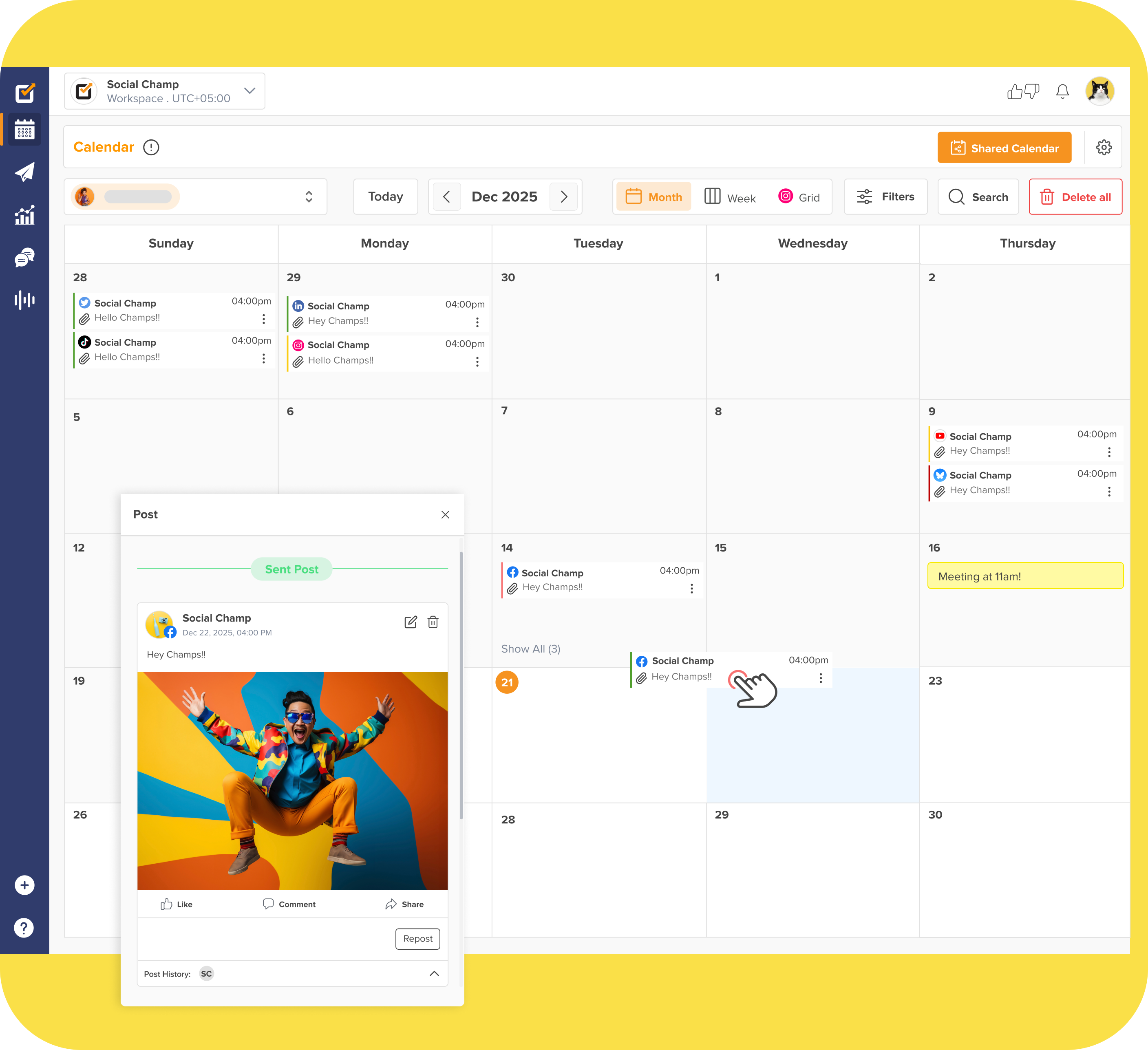
Boost Your Nonprofit’s Impact With Social Champ!
Don’t let social media management slow down your mission! With Social Champ, you can schedule posts, engage supporters, and track performance—all in one place.
Short Summary
- Nonprofits need a strong marketing strategy to raise awareness, build trust, and increase donations.
- Digital marketing plays a crucial role, with social media, email, SEO, and paid ads helping nonprofits connect with supporters.
- Storytelling is a powerful tool to create emotional connections and inspire action.
- A well-optimized website and SEO strategy can drive organic traffic and attract new donors.
- Email marketing helps nurture donor relationships through personalized outreach and impact updates.
- Social media management tools like Social Champ make it easier to schedule posts, engage supporters, and track performance.
- Paid advertising, including Google Ad Grants and social media ads, helps nonprofits expand their reach.
- Data tracking and analytics are essential for measuring success and optimizing marketing campaigns.
- Nonprofits can leverage corporate partnerships, peer-to-peer fundraising, and referral programs to grow their support base.
- A consistent and well-executed marketing plan ensures long-term success and increased impact in 2025.
Why Nonprofits Need a Strong Marketing Strategy
Nonprofits do life-changing work, but even the most impactful mission won’t gain traction without the right marketing strategy.
A strong marketing approach helps you:
- Raise awareness– People can’t support your cause if they don’t know about it. Strategic marketing ensures your message reaches the right audience.
- Build trust – Supporters want to know their donations make a difference. Clear, consistent communication fosters credibility and long-term relationships.
- Increase donations – Effective marketing creates engagement, which leads to action—whether that’s donating, volunteering, or advocating for your cause.
- Stay competitive – With thousands of nonprofits vying for attention, standing out requires more than passion. A well-planned marketing strategy helps you cut through the noise.
Featured Article: What Is Social Listening? Top Tips for Marketers in 2025
20 Proven Marketing Strategies for Nonprofits
Here are 20 proven strategies to help your organization make a bigger impact in 2025.
-
Define Your Brand and Messaging
Your nonprofit’s brand is more than just a logo—it’s your mission, values, and the emotions you evoke.
Create a clear and compelling message that tells people who you are, what you do, and why it matters.
Consistency across your website, social media, and campaigns builds trust and recognition.
-
Build a User-Friendly Website
Your website is often the first impression potential donors and supporters will have of your nonprofit.
Ensure it’s mobile-friendly, easy to navigate, and optimized for conversions.
Key elements include a clear mission statement, impactful visuals, a simple donation process, and compelling calls to action.
-
Leverage SEO to Improve Visibility
Search engine optimization (SEO) helps people find your nonprofit when they search for relevant topics online.
Use keyword research to optimize blog posts, landing pages, and your website’s content.
The more visible you are on Google, the more organic traffic (and potential donors) you attract.
-
Use Storytelling to Create Emotional Connections
People give to causes they feel emotionally connected to.
Share real stories of those your nonprofit has helped, whether through blog posts, social media, or video content.
Personal, authentic storytelling makes your mission more relatable and inspires action.
-
Optimize Email Marketing Campaigns
Email remains one of the most effective marketing tools for nonprofits.
Build a strong email list and segment it based on donor behavior, interests, or engagement levels.
Send regular updates, success stories, and donation appeals while ensuring your emails are visually appealing and mobile-friendly.
-
Engage on Social Media Strategically
Instead of trying to be everywhere, focus on platforms where your audience is most active. Share impactful stories, behind-the-scenes content, and user-generated posts.
Engage with your followers by responding to comments, hosting live Q&As, and running interactive campaigns.
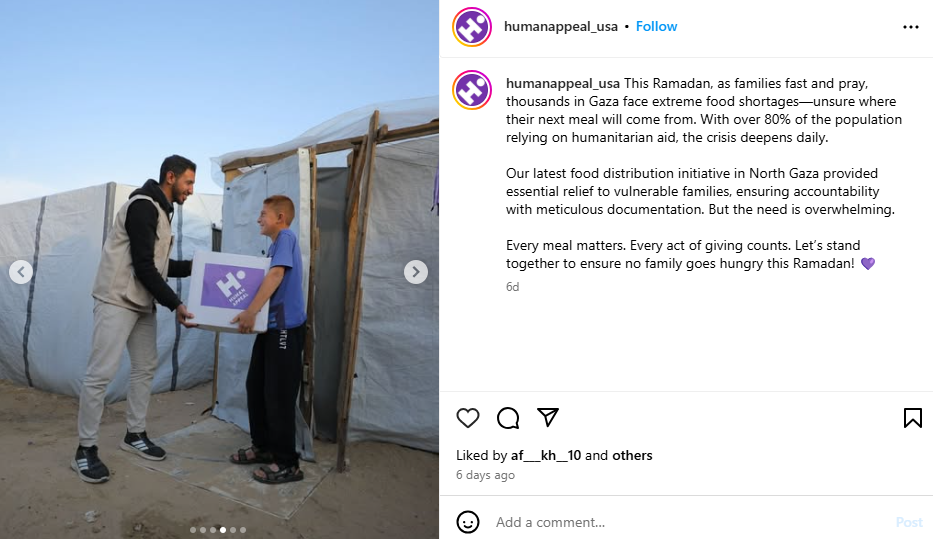
Behind-the-Scenes Post by @humanappeal_usa -
Create a Monthly Giving Program
Recurring donations provide a steady stream of funding. Encourage donors to give monthly by showing the long-term impact of their contributions.
Offer perks such as exclusive updates, behind-the-scenes content, or small gifts to make donors feel valued.
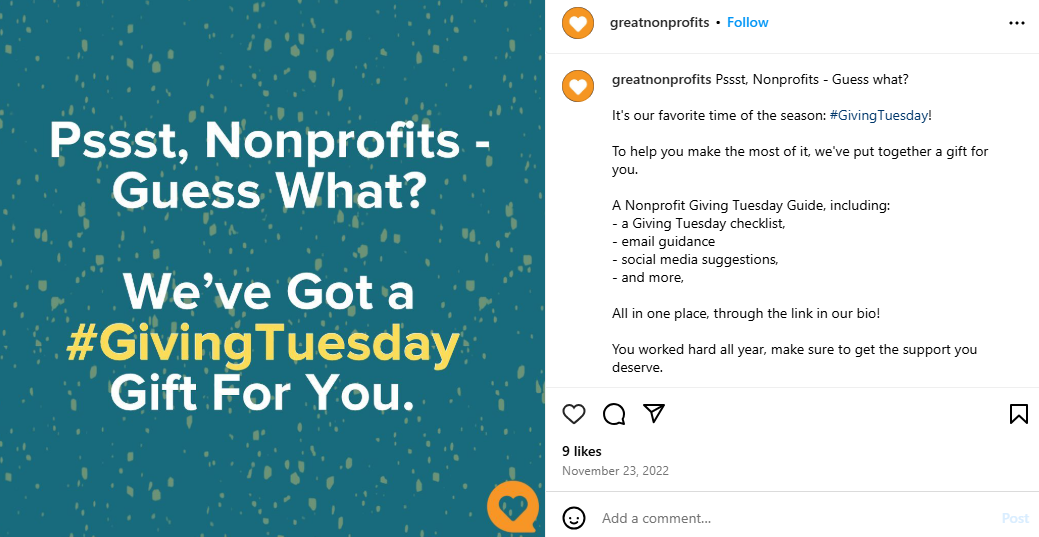
Instagram Post About a Gift by @greatnonprofits -
Utilize Google Ad Grants
Google offers nonprofits up to $10,000 per month in free advertising through Google Ad Grants.
This can drive traffic to your website, attract new donors, and increase event attendance.
Make sure to optimize your ads with relevant keywords and strong calls to action.
-
Host Virtual and In-Person Events
Fundraising events—whether in-person or virtual—are great for engaging donors and increasing awareness.
Webinars, charity runs, galas, and online auctions can generate donations while building a sense of community among supporters.
-
Partner With Influencers and Advocates
Collaborating with influencers, bloggers, or industry experts can significantly boost your nonprofit’s reach.
Identify individuals who align with your cause and encourage them to share your mission with their audience.
-
Encourage Peer-to-Peer Fundraising
Give your supporters the tools to fundraise on your behalf.
Platforms like Facebook Fundraisers and GoFundMe make it easy for individuals to create campaigns, rally their networks, and collect donations for your cause.
-
Use Video Marketing to Boost Engagement
Videos are highly engaging and shareable. Create short, impactful videos showcasing your work, donor stories, or behind-the-scenes efforts.
Platforms like YouTube, Instagram Reels, and TikTok can help you reach new audiences.
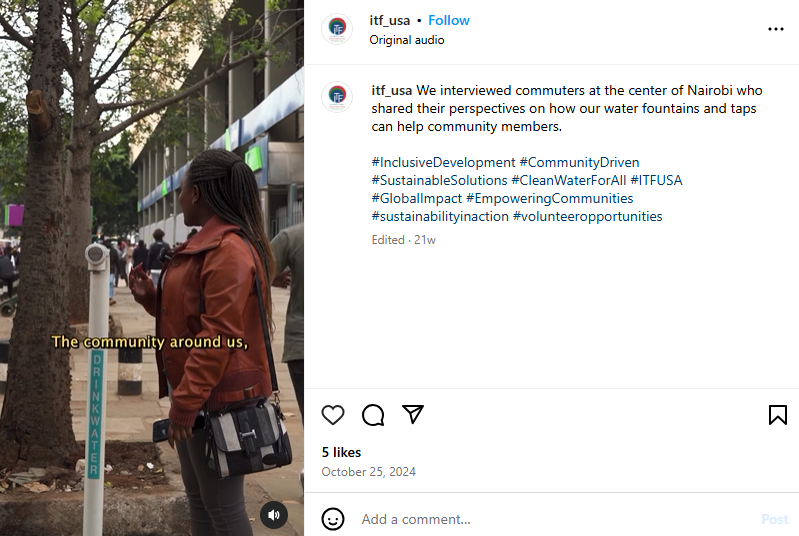
A Video Post on Instagram by @itf_usa -
Develop a Strong Content Marketing Strategy
Consistently creating valuable content—such as blog posts, guides, infographics, and case studies—positions your nonprofit as a thought leader.
This also improves SEO and provides shareable materials for social media and email campaigns.
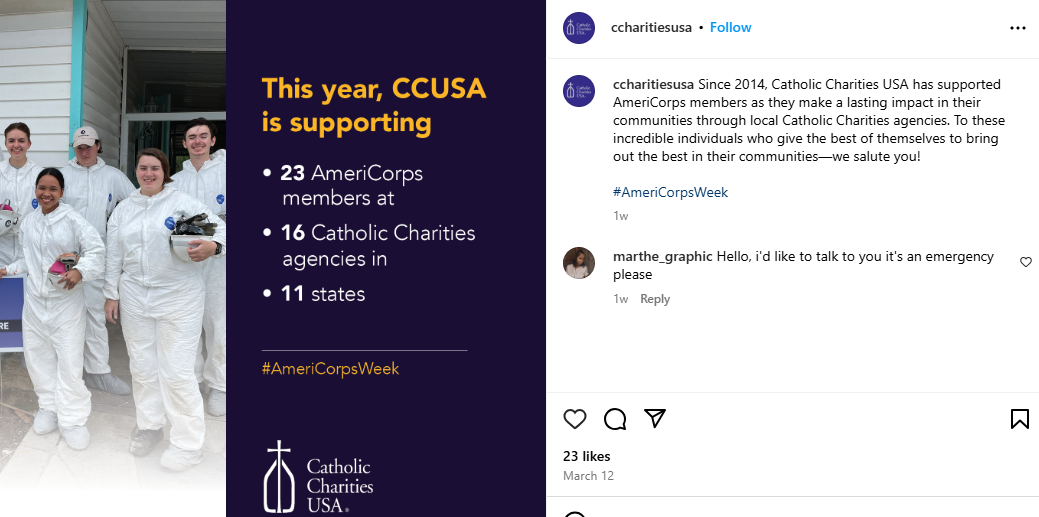
Announcement Post by @ccharitiesusa -
Tap Into Corporate Social Responsibility (CSR) Partnerships
Many companies are looking for nonprofit partners as part of their CSR initiatives.
Reach out to businesses for sponsorships, donation-matching programs, or employee volunteer opportunities.
-
Personalize Your Donor Outreach
Generic messages don’t cut it anymore. Use donor data to personalize emails, thank-you notes, and fundraising appeals.
Address donors by name, reference their past contributions, and show the specific impact of their support.
-
Use Retargeting Ads to Re-Engage Visitors
Not everyone donates the first time they visit your website.
Retargeting ads help you stay top-of-mind by displaying reminders to potential donors who previously engaged with your site or social media content.
-
Launch a Referral Program for Donors
Word-of-mouth marketing is powerful.
Encourage existing donors to refer friends and family by offering incentives like shoutouts, small gifts, or exclusive content for successful referrals.
-
Leverage Text Message Marketing
With high open rates, SMS marketing is a great way to send urgent appeals, reminders, and event updates.
Keep texts short, personalized, and include a direct donation link.
-
Encourage Volunteers to Become Advocates
Your volunteers are some of your biggest supporters.
Provide them with branded content and messaging to share on social media, helping to expand your reach organically.
-
Test, Measure, and Optimize Your Campaigns
Marketing is an ongoing process.
Use analytics tools to track website traffic, email open rates, and social media engagement. A/B test different strategies and adjust your approach based on what’s working best.
Featured Article: Top 15+ Sentiment Analysis Tools to Consider in 2025
Best Digital Channels to Reach Donors & Supporters
Reaching the right audience is key to growing your nonprofit’s impact. Here’s how to leverage the best platforms for engagement and fundraising:
-
Social Media
Social media is one of the most effective ways to build a community around your cause.
Platforms like Facebook, Instagram, X (formerly Twitter), LinkedIn, and TikTok allow you to share stories, post updates, and interact directly with supporters.
- Share Impactful Content– Post success stories, behind-the-scenes looks, and testimonials to showcase your nonprofit’s work.
- Leverage Video & Live Streams – Videos generate high engagement. Try Instagram Reels, TikTok videos, or Facebook Live Q&As to connect with your audience in real time.
- Encourage User-Generated Content – Ask volunteers and donors to share their experiences and tag your organization to boost credibility.
- Utilize Social Media Fundraising Tools – Facebook and Instagram allow you to collect donations directly through posts and live events.
Engaging consistently on social media helps keep your mission top-of-mind and encourages more people to take action.
-
Email Marketing
Email marketing remains a powerful tool for nurturing relationships and keeping supporters informed.
Unlike social media, where algorithms determine reach, email gives you direct access to your audience.
- Segment Your List– Organize email subscribers into groups (donors, volunteers, event attendees, etc.) and tailor messages accordingly.
- Send Personalized Appeals – Address supporters by name and reference past contributions to make your outreach feel more meaningful.
- Share Impact Updates – Let donors know how their contributions are making a difference. Use visuals and storytelling to make reports compelling.
- Automate Campaigns – Set up welcome emails, donation reminders, and thank-you messages to maintain engagement without manual effort.
A well-executed email strategy keeps your nonprofit connected with supporters while driving consistent donations.
-
SEO and Blogging
Search engine optimization (SEO) and content marketing help people find your nonprofit when they search for related topics online.
A strong SEO strategy increases your visibility, driving more potential donors to your website.
- Write Blog Posts on Key Issues– Educate your audience on the problems your nonprofit is addressing and how they can help.
- Use Relevant Keywords – Optimize your website and content with keywords donors might search for (e.g., “how to help homeless shelters” or “best animal rescue organizations to support”).
- Create Shareable Content – Infographics, how-to guides, and impactful stories encourage engagement and improve your nonprofit’s reach.
- Optimize Donation Pages – Ensure your donation page loads quickly, is mobile-friendly, and has clear calls to action for a seamless user experience.
A well-optimized blog and website can bring in long-term supporters who discover your nonprofit through organic search.
-
Paid Advertising
While organic strategies are essential, paid advertising can accelerate your nonprofit’s reach and fundraising efforts.
- Google Ad Grants– Google offers qualifying nonprofits up to $10,000 per month in free ad credits, allowing you to appear in search results for relevant keywords.
- Facebook & Instagram Ads – Target potential donors based on location, interests, and past interactions with your nonprofit.
- Retargeting Campaigns – Show ads to people who visited your website but didn’t complete a donation, encouraging them to return and contribute.
- YouTube Ads – Use compelling video ads to tell your nonprofit’s story and drive engagement.
Investing in paid advertising ensures your message reaches the right people at the right time, increasing the likelihood of donations and involvement.
Social Media Marketing for Nonprofits
Managing social media can be overwhelming for nonprofits, but Social Champ makes it easier by automating and streamlining your efforts.

Here’s how it helps:
- Schedule Posts in Advance– Plan and schedule content across multiple platforms to maintain consistency without daily manual posting.
- Engage with Supporters in Real-Time – Monitor and respond to comments, messages, and interactions from one centralized dashboard.
- Track Performance with Built-In Analytics – Measure engagement, audience growth, and post success to refine your strategy.
- Save Time & Focus on Your Mission – Automate social media tasks so you can dedicate more time to fundraising and outreach.
With Social Champ, nonprofits can effectively manage their social media presence, increase engagement, and drive more support—without the extra hassle.

Nonprofits Are Growing With Social Champ!
Social Champ helps you schedule posts, engage with supporters, and track success—all in one easy-to-use platform. Sign up now and take your social media game to the next level!
Tracking and Improving Marketing Performance
To make the most of your nonprofit’s marketing efforts, tracking performance is essential.
By monitoring key metrics and using the right tools, you can refine your strategy and maximize impact.
Here’s how:
- Monitor Key Metrics– Keep an eye on engagement, donation trends, and website traffic to understand what’s working and where improvements are needed. Metrics like click-through rates, conversion rates, and follower growth help measure success.
- Use Tools Like Social Champ – Social Champ’s analytics features allow you to track social media ROI, helping you see which posts drive the most engagement and donations. Other tools like Google Analytics and email marketing platforms provide deeper insights into audience behavior.
- Adjust Campaigns in Real Time – Don’t wait until the end of a campaign to evaluate results. Use real-time data to tweak messaging, adjust ad spend, or optimize content for better engagement and fundraising outcomes.
By consistently tracking and refining your marketing strategy, your nonprofit can grow its reach, increase donations, and create a bigger impact.
Conclusion
Marketing isn’t just about getting your nonprofit’s name out there—it’s about building connections, inspiring action, and making a real difference.
By using the right strategies, from storytelling and social media to SEO and email marketing, you can reach more people, grow your support base, and drive more donations.
The key is to stay consistent, track your results, and adjust your approach as needed.
With tools like Social Champ to streamline your efforts and analytics to guide your decisions, marketing becomes less overwhelming and more impactful.
No matter where you’re starting from, small, intentional steps can lead to big results.
Put these strategies into action, stay engaged with your audience, and keep pushing your mission forward.
Your nonprofit’s impact in 2025 is in your hands!
